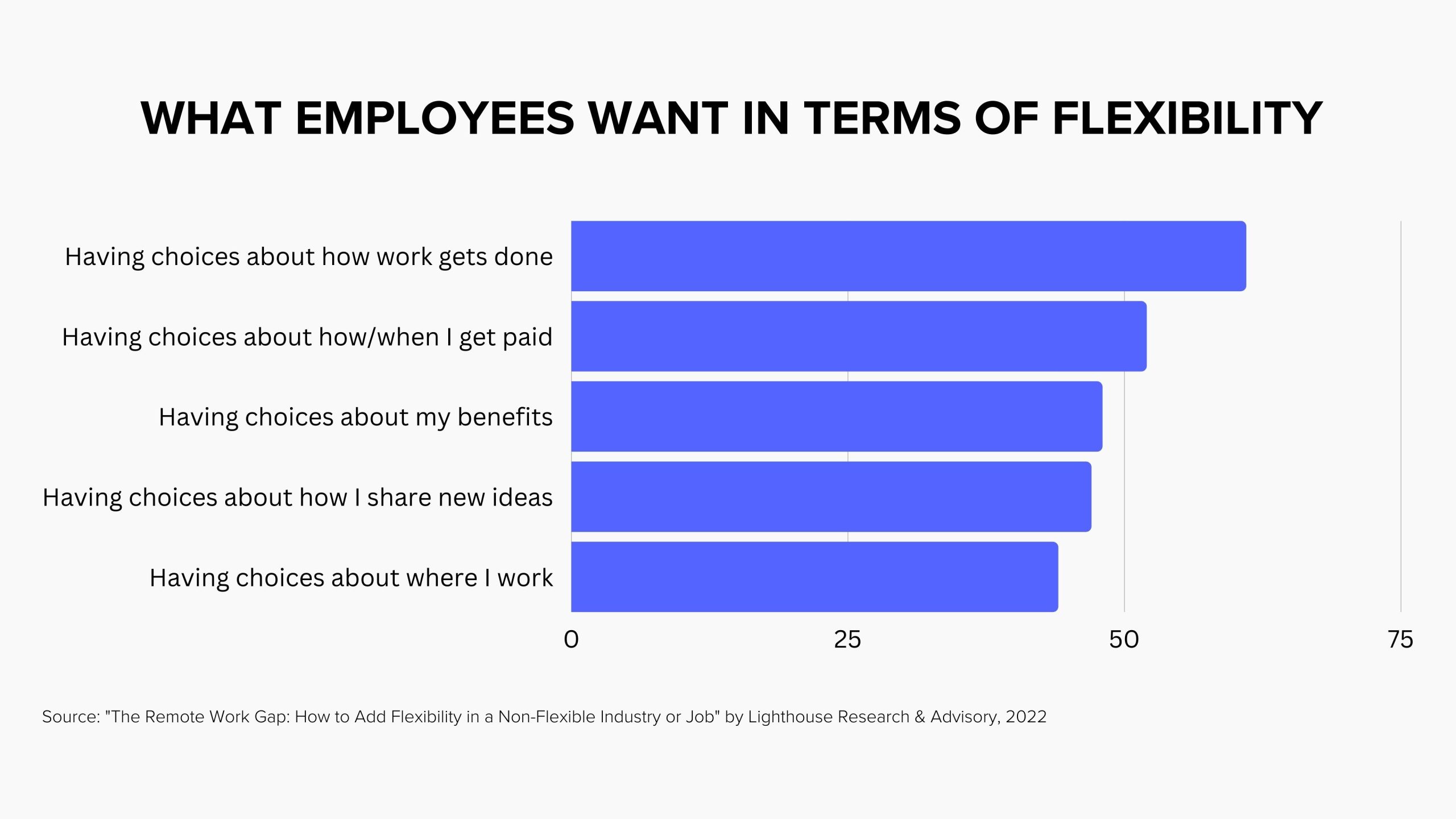Particularly after the global pandemic, flexibility matters. Employees and candidates alike are demanding more ownership of their working hours and location.
And flexibility is more than just an employee perk. A survey of more than 19,000 Harvard Business Review readers found that a flexible, open-minded workplace culture was the primary differentiator of diverse and inclusive organizations and those that are not.
But company leadership must be strategic about the way they roll out flexible workplace policies. Particularly in hybrid workplaces, people are starting to note that employees who are willing and able to go into the office each day may feel more included and valued than their work from home counterparts. This is particularly alarming given the propensity of minority employees to prefer working from home.

Whether flexibility means choosing when you work or how your work gets done, company leaders must be mindful in how they execute policies.
Top Tools for Workplace Flexibility
JobSage evaluated several tools that aim to support the goal of equitable workplace flexibility. Of those we reviewed, we would recommend employers look into the following tools.
Trello
Trello is a visual collaboration tool that helps you organize and prioritize projects. Each user can organize their tasks into lists and boards, which they can then share with other users or keep private. The app also allows users to set due dates and track progress towards each goal over time.
Trello is a great tool for remote and distributed teams. Its organization and transparency enable employees to work remotely, communicate more effectively, and stay focused on individual and shared tasks. If usership is any indication, Trello boasts over 2,000,000 teams worldwide that use their tool to work more collaboratively and get more done.
Pingboard
Pingboard makes it easier for employees to find information on colleagues, teams, and their organization. More importantly, by increasing transparency, Pingboard helps new hires get up to speed more quickly and enables employees to connect with the right people in the organization. This is especially important when your team is remote or hybrid.
Christine Morse, HR Manager at Postlight, shares “Pingboard is so easy to roll out, and in a situation like ours where you have remote employees, it couldn’t be easier to know where people are and what they’re doing.”
Pingboard is also a top recommendation because of its affordability.
“Being a small company, we don’t necessarily have the budget to invest in an expensive tool. Pingboard is an important resource that our employees truly enjoy using,” says Cheryl Trbula, Vice President of Human Resources at Asure Software.
Donut
Almost every remote or distributed team knows about Slack, the workplace chat app for teams to asynchronously communicate with colleagues around the world or across the cubicle.
But have you heard of Donut?
Donut is an app that introduces colleagues via direct message right in Slack. Donut’s tech enables it to prioritize introductions between colleagues who don’t normally interact within Slack, building connections across teams.
For hybrid workplaces, Donut helps employees intentionally create location and team-independent connections. In return, the risks of hybrid workplaces— miscommunications, unequal access to opportunity, proximity-based connections, and more— are minimized. For fully remote teams, Donut’s casual reminders for connection help employees form friendships and build trust. This is especially important for quickly growing teams that need to integrate new hires, as well as for newly distributed teams that need to maintain the bonds they built in person.

Looking for more helpful HR tools?
Visit JobSage’s Employer Resource Center for more guides, resources, and more!
